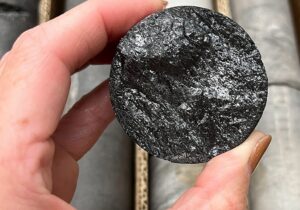
Deposits of designated critical minerals needed to transition the world’s energy systems away from fossil fuels may, ironically enough, be co-located with coal deposits that have been mined to produce the fossil fuel most implicated in climate change.
Now, research led by the University of Utah has documented elevated concentrations of a key subset of critical minerals, known as rare earth elements, or REEs, in active mines rimming the Uinta coal belt of Colorado and Utah.
These findings open the possibility that these mines could see a secondary resource stream in the form of metals used in renewable energy and numerous other high-tech applications, according to study co-author Lauren Birgenheier, an associate professor of geology and geophysics.
“The model is if you’re already moving rock, could you move a little more rock for resources towards energy transition?” Birgenheier said. “In those areas, we’re finding that the rare earth elements are concentrated in fine-grain shale units, the muddy shales that are above and below the coal seams.”
A search for alternate sources of rare earths
This research was conducted in partnership with the Utah Geological Survey and Colorado Geological Survey as part of the Department of Energy-funded Carbon Ore, Rare Earth and Critical Minerals project, or CORE-CM. The new findings will form the basis for a grant request of an additional $9.4 million in federal funding to continue the research.
While these metals are crucial for U.S. manufacturing, especially in high-end technologies, they are largely sourced from overseas.
“When we talk about them as ‘critical minerals,’ a lot of the criticality is related to the supply chain and the processing,” said Michael Free, a professor metallurgical engineering in the John and Marcia Price College of Engineering and the principal investigator on the DOE grant. “This project is designed around looking at some alternative unconventional domestic sources for these materials.”
The U-led study was published last month in the journal Frontiers in Earth Science. Team members included graduate students Haley Coe, the lead author, and Diego Fernandez, a research professor who runs the lab that tested samples.
Continue Reading Brian Maffly’s “Can Coal Mines be Tapped for Rare Earth Elements?” on @TheU.